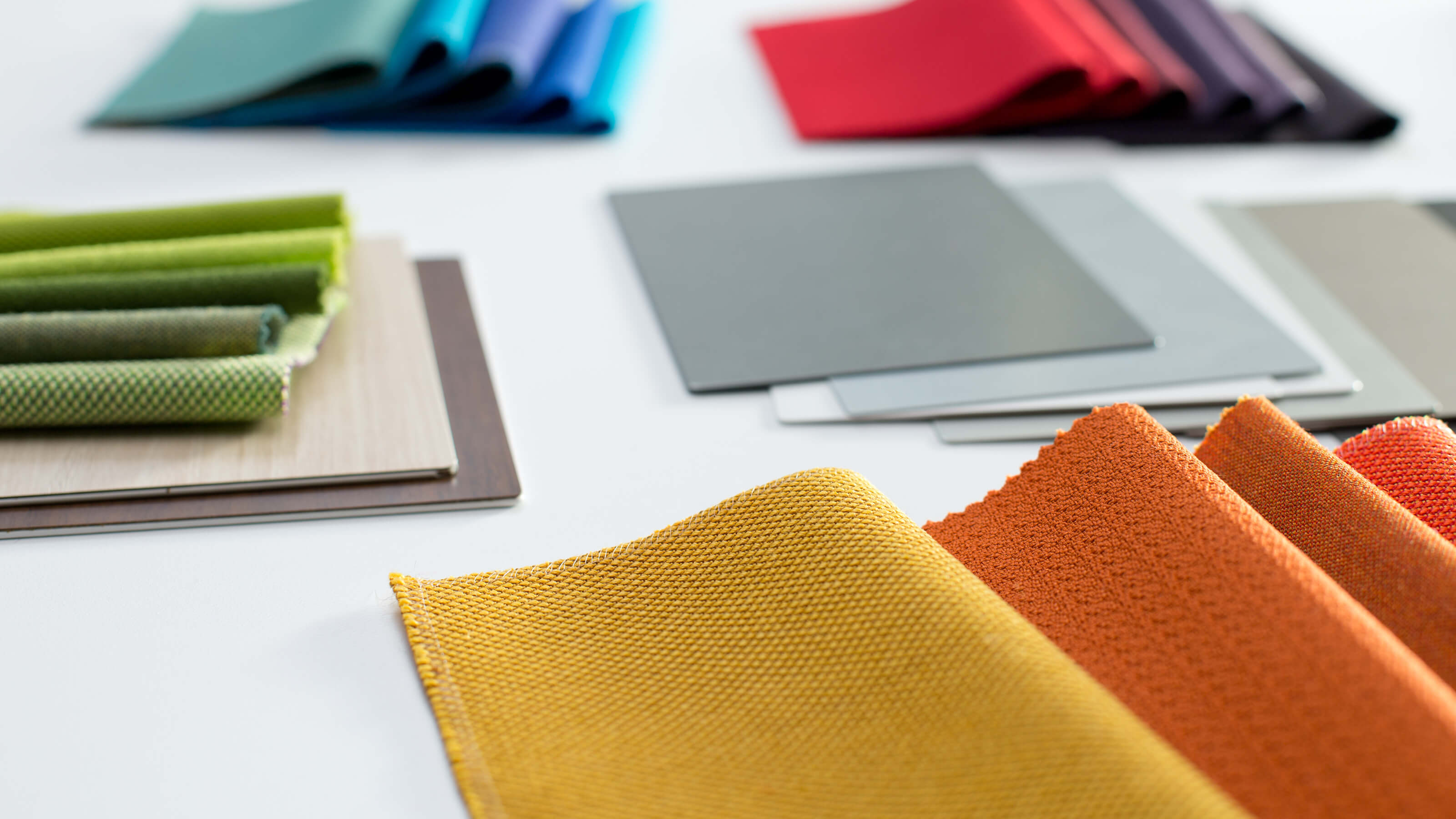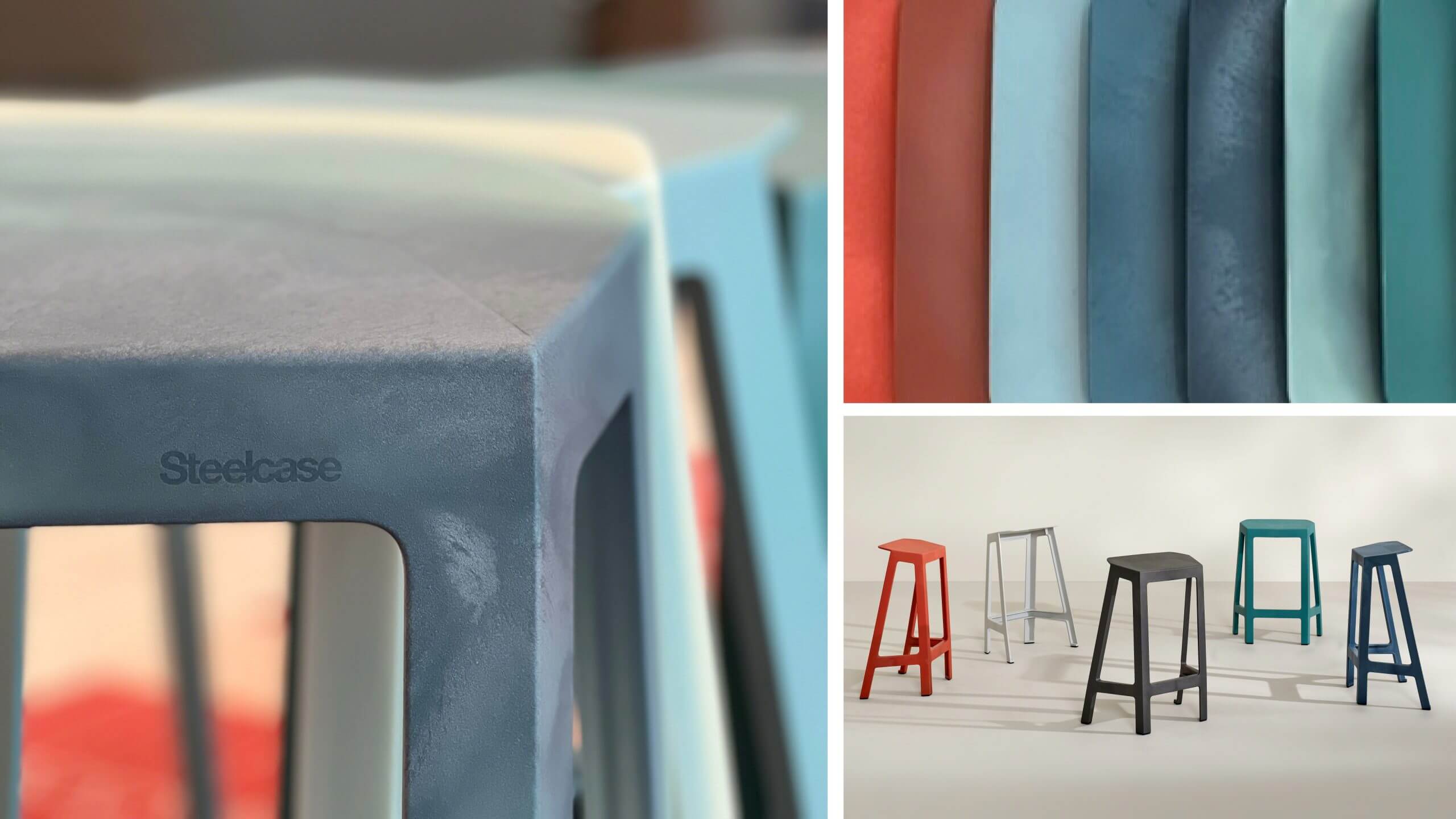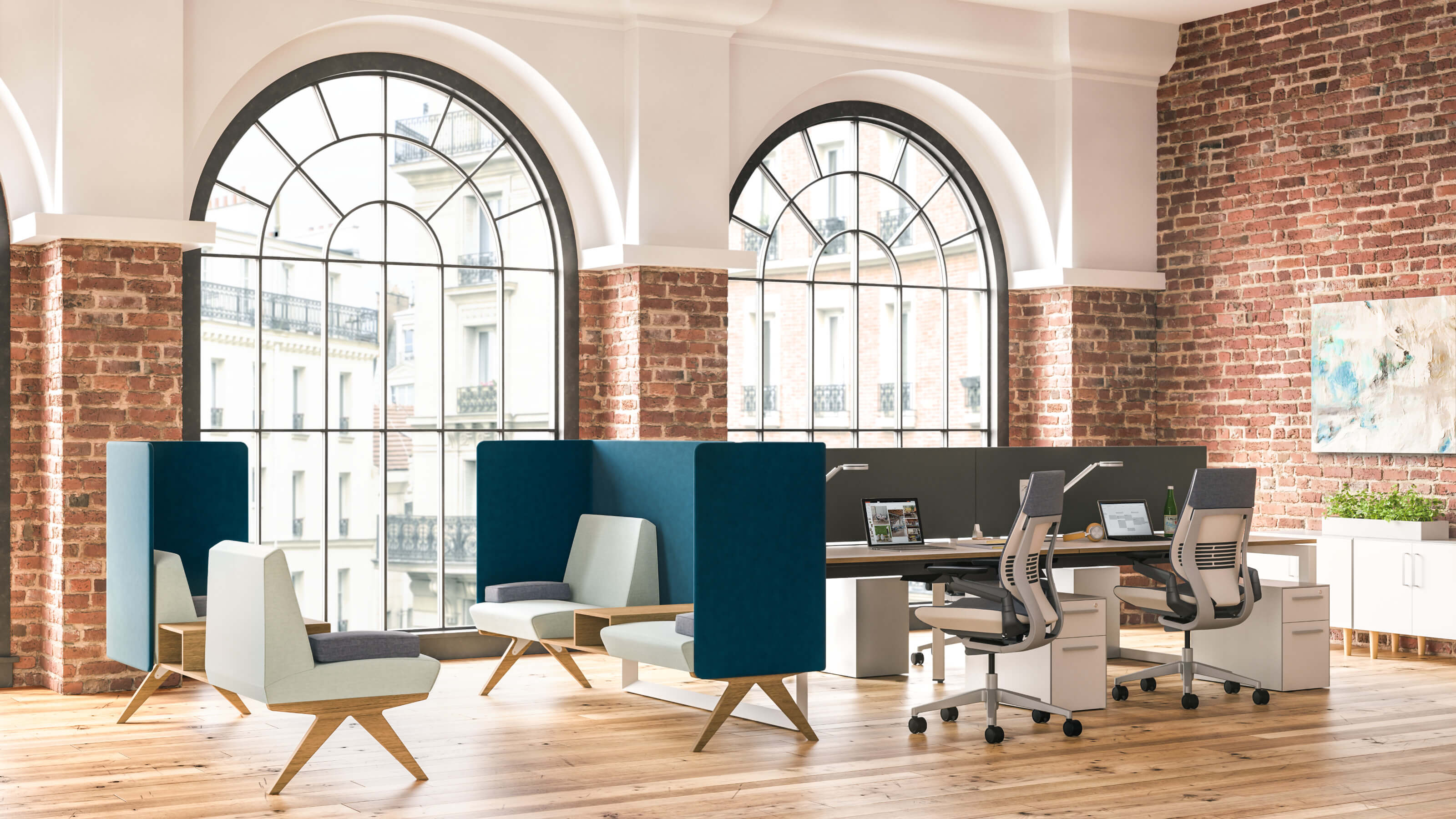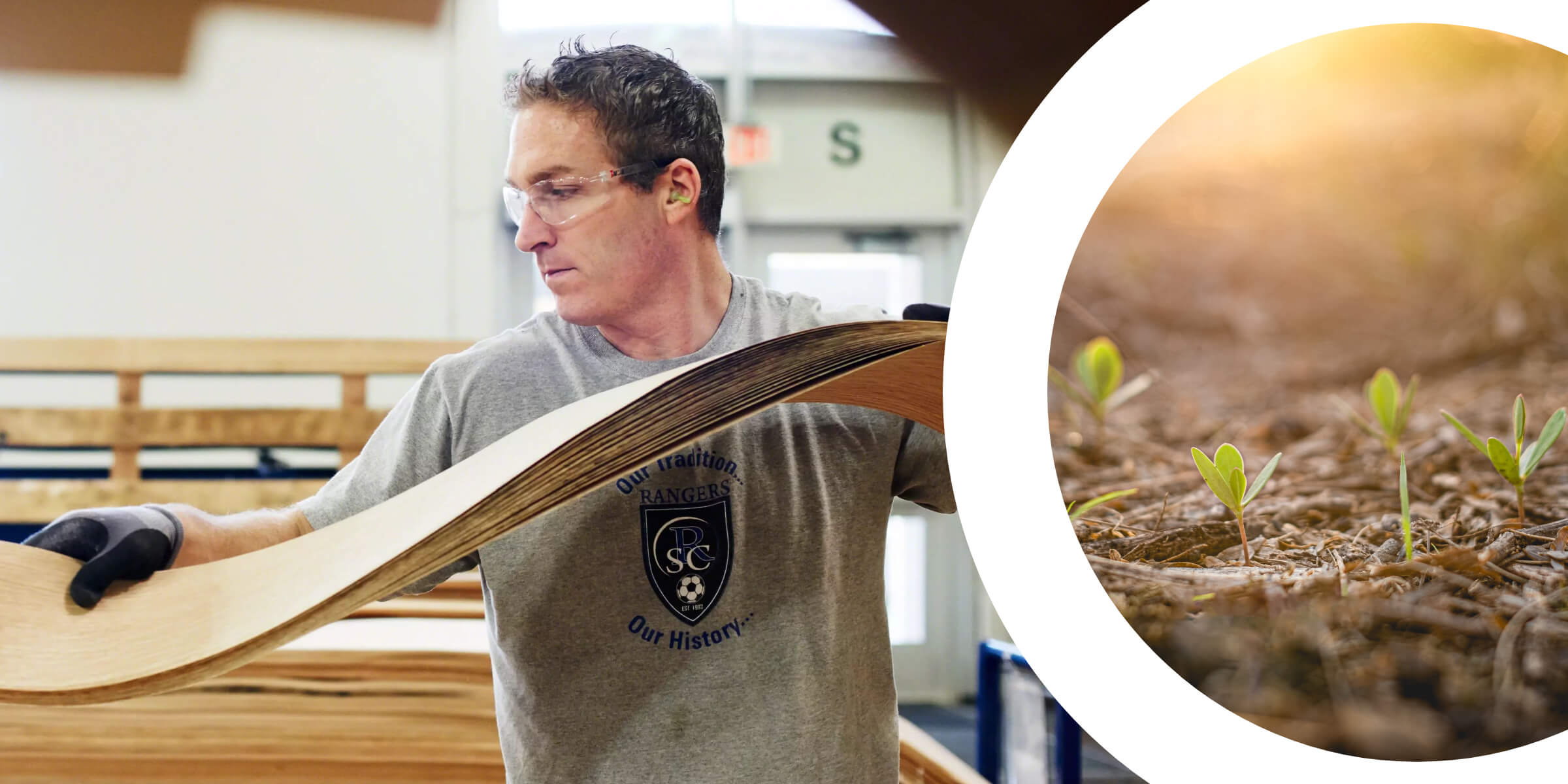If a circular mindset is applied when furnishing your workplace, significant and measurable differences can be achieved, delivering impressive environmental outcomes.
Traditional thinking has been ‘out with the old and in the new’ when it comes to furniture. But as sustainability becomes a business imperative, more companies are embracing circular design when fitting out their workplace.
What is circular design?
Circular design focuses on creating products and services for the circular economy.
It involves rethinking the process of creating a product from the beginning so that it can be useful repeatedly by being repaired, reused, recycled or transformed.
For example, in the case of a task chair, circular design involves thinking from the outset about how to recycle its materials so they can be reused in different ways once the chair’s first life is over.
“With circular design, we can prevent the creation of waste and pollution right at the start.”
The Ellen Macarthur Foundation
The principles of circular design
Circular design applies the three principles of the circular economy:
- Eliminate waste and pollution - Waste and pollution are not accidents but are often the consequences of design decisions, where around 80% of environmental impacts are determined. Designing out waste and pollution can be achieved by choosing materials designed for repeat circulation, making use of by-products or engaging in material innovation.
- Keep products and materials in use - Designing for durability, modularity or repairability to prolong the life, functionality and value of products, components and materials. Keeping materials circulating in the economy by creatine reuse, repair, remanufacture and recycling systems that allow products and materials to be used more times and for longer.
- Regenerate natural systems - In nature, there is no concept of waste. By design for regenerative outcomes and for successive cycles in which bio-based materials are used through different applications and safely returned to the earth, natural resources are enhanced.
The future is circular
Circular design is being embraced not just by furniture manufacturers, but across all industries, from packaging to fashion to automotive.
For example, Ecovative has designed a new form of packaging made from mycelium (mushroom root) which, as well as being cheap, plentiful and easy to grow, is entirely biodegradable.
Patagonia is the leading circular brand in the world of fashion retail. Customers can rent gear and purchase pre-loved items. They’ve also created a zero-waste t-shirt made from old t-shirts.
In the world of office furniture, manufacturers are increasingly embracing circular design by building products from recycled materials and identifying how materials and products can be used beyond their first life.
Orangebox is a great example of a furniture manufacturer embracing circular design. Every product they make, from task chairs to workstations to acoustic pods, is built from sustainable resources and products that are designed to be easier to renew and recycle.
Orangebox was responsible for developing and manufacturing the first Cradle to Cradle certified office chair in Europe in 2009. The ARA Task chair turned conventional office chair design on its head in order to achieve 98% recyclability.
The first product in the world to be granted a Cradle to Cradle certificate was the original Steelcase Think Chair in 2004.
Today, many office furniture manufacturers are creating products from recycled materials and with high recyclable content. Whatever your need or price point, a sustainable solution can be found.
.jpg?width=3200&name=14-0002854%20(1).jpg)
The benefits of office furniture built from a circular design mindset
Sustainable and environmentally friendly
Office furniture built with circular design enables you to purchase assets that are guaranteed to have only a fraction of the environmental impact of newly manufactured furniture, resulting in reduced embodied carbon. And when you no longer need a piece of furniture, it can be sold or donated to other businesses fitting out their office spaces with sustainable assets, rather than letting them end up in landfill.
Financially advantageous
Circular design also brings several financial benefits. There’s the option to sell unwanted furniture into the circular economy enabling you to reinvest in new assets. But also, the cost of refurbished office furniture through the circular economy is considerably lower than purchasing newly manufactured assets.
Flexible, personalised options
The repair, remanufacturing and repurposing of office furniture in the circular economy gives you greater flexibility for personalisation. You can make requests to suit your specific needs, enabling you to have sustainable furniture that matches the aesthetic of your office.
Increased engagement
Introducing circular design into your office space brings together a range of stakeholders, from senior management and employees to suppliers and customers. This engagement creates a sense of common purpose and engenders a sense of pride. A commitment to sustainability is important for employees and customers alike.
3 ways to embrace circular design
1. Refurbish what you can
Where possible, look at your existing assets to see what can be reused or refurbished. Tired assets can be refurbished or reinvented to look like new and serve different purposes, for example chairs can be reupholstered or workstations reconfigured to create collaboration tables. Not only will refurbishing your existing assets help reduce your carbon footprint, but it will also reduce your costs.
Sometimes internal reuse isn’t viable. For example, you may be closing a building down or downsizing to a much smaller space. If reuse or refurbishment isn’t an option, it’s still possible to apply circular economy principles and clear unwanted assets sustainably. For example, through donation, resale or recycling.

2. Choose office furniture built with circular design in mind
Having a circular mindset not only means extending the life of your existing assets but also considering what and how you buy. Consider reused or refurbished products or if buying new, opt for those that are designed to last and built from items that can be reused, recycled or repurposed.
Here are some things to consider when evaluating office furniture products for circular design:
- Material content - is the product made from recycled, reused or refurbished materials?
- Repairability - can it be effectively maintained (cleaned, replaced with spare parts, reupholstered etc) to extend the product's lifespan?
- Recyclability - how much of the product can be recycled after use?
Taking Steelcase's new Perch Stool, part of the Flex collection, as an example, the material content reveals it is made from computer production waste, and it is also 100% recyclable. It's a perfect example of circular design.

3. Consider modular options
Opting for modular furniture is a great way to plan for upgrades and repairs. If one part breaks, it can easily be replaced. Likewise, modular systems can be continually customised and reconfigured to suit changing needs as they evolve over time.
Flexibility has emerged as a key priority coming out of the pandemic, and it’s increasingly important for organisations to create workspaces that can be easily reconfigured and personalised. Modular furniture gives you the freedom and flexibility to do this in a sustainable way.

Summary
Circular design isn’t just a trend, it’s the future. Furnishing your office space with products that are designed with the three circular economy principles in mind is a great way to help you achieve your sustainability goals.
At Insightful Environments, our extensive network of suppliers means we can offer sustainable office furniture products to suit your unique needs and at a range of price points to suit any budget.
To find out more about how we can help you to create a more sustainable workplace, get in touch.










